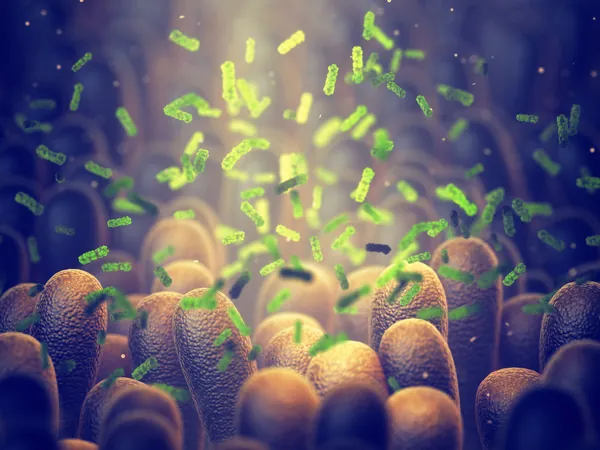
Revolutionary Link Between Chronic Urticaria and Gut Bacteria Uncovered!
2025-05-22
Author: Nur
What’s Making You Itch? New Findings on Chronic Urticaria
Chronic spontaneous urticaria (CSU) could be more than just a skin condition—it may be deeply connected to the gut microbiome! Groundbreaking research published in the Journal of Investigational Allergology and Clinical Immunology reveals a compelling link between specific gut bacteria and the pathways they influence, hinting at new avenues for treatment and management of this often-misunderstood ailment.
The Challenge of Diagnosis
CSU is notoriously challenging to diagnose, often mistaken for other itchy skin conditions due to its mast cell-driven nature. This confusion can obscure true epidemiological insights, making effective management a puzzle for medical professionals. A clear clinical evaluation is vital to distinguish CSU from other similar disorders.
Gut Bacteria at the Heart of the Matter
Previous studies hinted that alterations in gut microbiota and their metabolites might disrupt immune and inflammatory pathways, potentially triggering CSU symptoms. The latest metabolomic analysis highlighted concerning changes, revealing decreased levels of beneficial fatty acids in patients, which may intensify mast cell-driven skin inflammation.
Genomic Discoveries Unveiled!
In a pioneering genome-wide association study, researchers utilized cutting-edge Mendelian randomization techniques to explore genetic causality between gut bacteria and CSU. They identified 2,238 single nucleotide polymorphisms (SNPs) associated with 211 taxa, providing a robust genetic mapping of this relationship.
Bacterial Genera Under the Microscope
The findings were striking! The genus Peptococcus emerged as a significant player, with researchers finding higher risks associated with specific bacterial genera: Collinsella, Lachnospiraceae UCG004, Ruminococcaceae UCG004, and Sellimonas were linked to increased CSU risk. On the flip side, beneficial bacteria such as Family XIII UCG001 and Methanobrevibacter appeared to offer protection against CSU.
Vital Metabolic Pathways Identified
Additionally, eight key gut bacterial metabolic pathways were highlighted as crucial in creating either risk or protection against CSU. Pathways such as ASPASN-PWY and GALACT-GLUCUROCAT-PWY showed significant associations, hinting at the complex interplay between metabolism and skin health.
A Call for More Research
Despite these exciting discoveries, researchers caution that the field is still in its infancy. The limited sample sizes and the need for further validation across diverse populations emphasize the need for more specialized studies focusing on specific bacterial species.
The Future is Gut Health!
The authors of the study encourage continued exploration into how gut microbiota affect CSU, proposing new pathways for targeted therapies. This new understanding could revolutionize how we approach CSU and other similar conditions, spotlighting the gut's role in skin health like never before!


 Brasil (PT)
Brasil (PT)
 Canada (EN)
Canada (EN)
 Chile (ES)
Chile (ES)
 Česko (CS)
Česko (CS)
 대한민국 (KO)
대한민국 (KO)
 España (ES)
España (ES)
 France (FR)
France (FR)
 Hong Kong (EN)
Hong Kong (EN)
 Italia (IT)
Italia (IT)
 日本 (JA)
日本 (JA)
 Magyarország (HU)
Magyarország (HU)
 Norge (NO)
Norge (NO)
 Polska (PL)
Polska (PL)
 Schweiz (DE)
Schweiz (DE)
 Singapore (EN)
Singapore (EN)
 Sverige (SV)
Sverige (SV)
 Suomi (FI)
Suomi (FI)
 Türkiye (TR)
Türkiye (TR)
 الإمارات العربية المتحدة (AR)
الإمارات العربية المتحدة (AR)